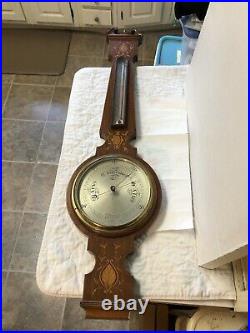
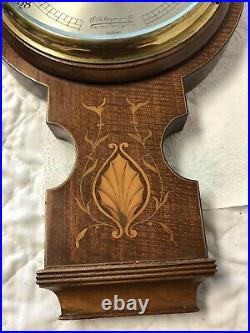



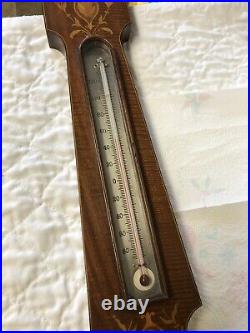



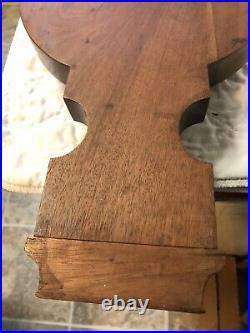
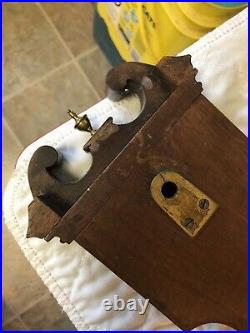
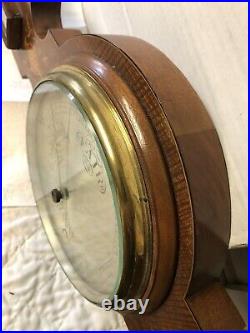
Magnificent Antique Wall Weather Station E B Meyrowitz Barometer & Taylor Thermometer Inlay Walnut. Measures overall about 38 1/2″ long, 10 1/4″ wide, 2 1/2 deep. The Taylor thermometer is 11 5/8 long. The compensated barometer is 8 3/4″ wide bezel and 7 1/2″ wide silvered dial. Overall fine condition, the finial part at the top is a little loose, a fine example of a classic antique wall weather station – please see my 12 photos. Emil Bruno Meyrowitz, born on the 20th October 1852 in Greifenhagen, Prussia, was the founder of the eponymous oculist. Meyrowitz henceforth began its rich history in 1875. Stores were opened in London, Paris and New York over the course of the next twenty years retailing not only spectacles but all manner of optical goods, devices and instruments. Over one hundred and forty five years later the name of Meyrowitz lives on in its own unique spirit still evoking memories of a brand playing a key role in the early days of aviation, motor racing and mountaineering. From humble beginnings in the 1870’s E. Meyrowitz had soon built a reputation for itself as not only a pioneer in all things optical and ophthalmic but had also extended its prowess to the motor sports arena. Many land speed records were broken between the 1920’s and 1950’s behind the brand’s infamous Luxor Goggles including those set by Sir Malcolm Campbell, Sir Henry Seagrave and John Cobb. The first Le Mans 24 Hours in 1923 was won by André Lagache using the very same goggles. Each subsequent race until 1940 crowned winners donning such eye protection including Woolf Barnato, Luigi Chinetti, Glen Kidston and Jean-Pierre Wimille racing across Bentley, Alfa Romeo and Bugatti. Countless more feats were achieved behind the brand’s racing apparel with numerous wins at the Monaco Grand Prix, The Indianapolis 500 and Mille Miglia. George Taylor was born in a Stoddard farmhouse in 1832. His grandparents, Danforth and Tabitha Taylor, had settled nearby and cleared the surrounding land 40 years earlier. George spent his early years on the family farm, but as a teenager, he headed west to seek his fortune. Taylor stopped in Rochester, N. Where he met David Kendall, a young man whose father had been a pioneer thermometer maker. The two men worked alone in one room over a drugstore. Kendall made the thermometer tubes and Taylor handled the assembly, bookkeeping and sales. The firm moved to larger quarters within a few months and the business expanded rapidly. The company soon began to produce barometers as well. Kendall left the firm in 1853 and Taylor continued on his own. His motto was: accuracy first. Taylors brother Frank later joined the firm, which became known as Taylor Brothers. Three of Georges sons joined the firm. One of them made the first sales trip to Europe, opening a worldwide market. By the early 1900s, the company had factories in Rochester and Toronto and additional offices in Baltimore, Boston, Chicago, New York, Philadelphia, St. The world-renowned Taylor brand continues today, turning out bath scales, weather instruments, and thermometers and measuring instruments for home, kitchen and food service use. Stoddard native George Taylor died in 1889, 38 years after he made his first thermometer. His children and grandchildren continued his firm, which became known around the world as the Taylor Instrument Co. The item “Antique Wall Weather Station Meyrowitz Barometer Taylor Thermometer Inlay Walnut” is in sale since Sunday, December 19, 2021. This item is in the category “Antiques\Science & Medicine (Pre-1930)\Scientific Instruments\Barometers”. The seller is “spooknook” and is located in Weymouth, Massachusetts. This item can be shipped worldwide.
- Original/Reproduction: Original




















